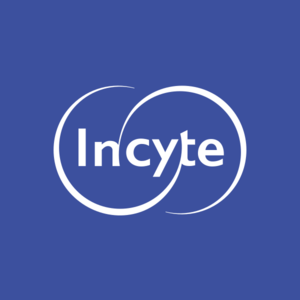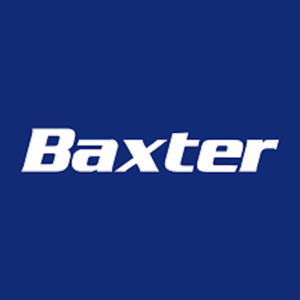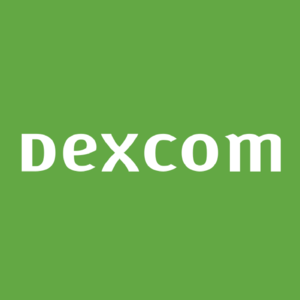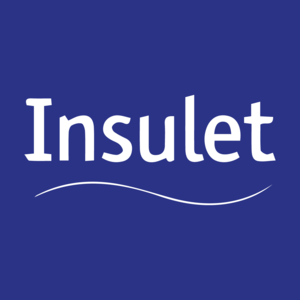
iRhythm (IRTC)
iRhythm is a sound business. Although it has burned cash, its growth shows it’s deploying the Jeff Bezos reinvestment strategy.― StockStory Analyst Team
1. News
2. Summary
Why iRhythm Is Interesting
Pioneering the shift from bulky, short-term heart monitors to sleek, wire-free patches, iRhythm Technologies (NASDAQ:IRTC) provides wearable cardiac monitoring devices and AI-powered analysis services that help physicians detect and diagnose heart rhythm disorders.
- Notable projected revenue growth of 17.9% for the next 12 months hints at market share gains
- Annual revenue growth of 23.4% over the last five years was superb and indicates its market share increased during this cycle
- On a dimmer note, its poor expense management has led to adjusted operating margin losses


iRhythm shows some promise. If you’re a believer, the price looks reasonable.
Why Is Now The Time To Buy iRhythm?
High Quality
Investable
Underperform
Why Is Now The Time To Buy iRhythm?
iRhythm is trading at $183.15 per share, or 66.1x forward EV-to-EBITDA. This lofty multiple could mean short-term stock-price swings, but big picture, we think the price is appropriate for the top-line growth you get.
Now could be a good time to invest if you believe in the story.
3. iRhythm (IRTC) Research Report: Q3 CY2025 Update
Medical technology company iRhythm Technologies (NASDAQ:IRTC) reported Q3 CY2025 results exceeding the market’s revenue expectations, with sales up 30.7% year on year to $192.9 million. The company’s full-year revenue guidance of $737.5 million at the midpoint came in 1.5% above analysts’ estimates. Its non-GAAP loss of $0.06 per share was 78.9% above analysts’ consensus estimates.
iRhythm (IRTC) Q3 CY2025 Highlights:
- Revenue: $192.9 million vs analyst estimates of $184.4 million (30.7% year-on-year growth, 4.6% beat)
- Adjusted EPS: -$0.06 vs analyst estimates of -$0.28 (78.9% beat)
- Adjusted EBITDA: $21.56 million vs analyst estimates of $17.32 million (11.2% margin, 24.5% beat)
- The company lifted its revenue guidance for the full year to $737.5 million at the midpoint from $725 million, a 1.7% increase
- Market Capitalization: $5.95 billion
Company Overview
Pioneering the shift from bulky, short-term heart monitors to sleek, wire-free patches, iRhythm Technologies (NASDAQ:IRTC) provides wearable cardiac monitoring devices and AI-powered analysis services that help physicians detect and diagnose heart rhythm disorders.
The company's flagship product is the Zio System, which combines a small, adhesive, water-resistant patch that patients wear for up to 14 days with sophisticated cloud-based analytics. Unlike traditional Holter monitors that typically record for just 24-48 hours and require multiple wires, the Zio patch continuously records every heartbeat without disrupting daily activities, resulting in patient compliance rates of 98-99%.
When a physician prescribes a Zio Service, the patient wears the patch for the prescribed period, during which they can mark symptoms by pressing a button on the device. After the monitoring period, the patch is returned to iRhythm's independent diagnostic testing facility where the data—approximately 1.5 million heartbeats per patient—is uploaded to the cloud and analyzed using the company's FDA-cleared artificial intelligence algorithms.
Certified cardiographic technicians validate the AI findings before sending a comprehensive report to the prescribing physician. The company offers different monitoring solutions: the Zio Monitor and Zio XT for long-term continuous monitoring, and the Zio AT, which adds real-time transmission capabilities for more urgent cases requiring mobile cardiac telemetry.
iRhythm's business model operates as a healthcare service rather than just a device manufacturer. The company bills insurance companies and Medicare directly for its monitoring services, with approximately 86% of its revenue coming from third-party payers. This integrated approach allows iRhythm to maintain quality control throughout the diagnostic process.
The company has expanded its technology platform with the Zio Watch, developed in partnership with Verily (an Alphabet company). This wrist-worn wearable is designed to identify and monitor atrial fibrillation, a common heart rhythm disorder that increases stroke risk. iRhythm is also exploring opportunities to integrate its AI algorithms with other wearable devices.
4. Patient Monitoring
Patient monitoring companies within the healthcare equipment industry offer devices and technologies that track chronic conditions and support real-time health management, such as continuous glucose monitors (CGMs) and sleep apnea machines. These businesses benefit from recurring revenue from consumables and software subscriptions tied to device sales (razor, razor blade model). The rising prevalence of chronic diseases like diabetes and respiratory disorders due to an aging population as well as growing adoption of digitization are good for the industry. However, these companies face challenges from high R&D costs and reliance on regulatory approvals. Looking ahead, the sector is positioned for growth due to tailwinds like the rising burden of chronic diseases from an aging population, the shift toward value-based care, and increased adoption of digital health solutions. Innovations in AI and machine learning are expected to enhance device accuracy and functionality, improving patient outcomes and driving demand. However, there are headwinds such as pricing pressures as healthcare costs are a key focus, especially in the US. An evolving regulatory landscape and competition from more tech-forward new entrants could present additional challenges.
iRhythm's main competitors include BioTelemetry (acquired by Royal Philips), Preventice Solutions (acquired by Boston Scientific), and Bardy Diagnostics (acquired by Baxter International). The company also competes with traditional Holter monitor manufacturers like GE Healthcare, Philips Healthcare, and Welch Allyn (now part of Baxter International).
5. Revenue Scale
Larger companies benefit from economies of scale, where fixed costs like infrastructure, technology, and administration are spread over a higher volume of goods or services, reducing the cost per unit. Scale can also lead to bargaining power with suppliers, greater brand recognition, and more investment firepower. A virtuous cycle can ensue if a scaled company plays its cards right.
With just $702.6 million in revenue over the past 12 months, iRhythm is a small company in an industry where scale matters. This makes it difficult to build trust with customers because healthcare is heavily regulated, complex, and resource-intensive.
6. Revenue Growth
Examining a company’s long-term performance can provide clues about its quality. Any business can put up a good quarter or two, but the best consistently grow over the long haul. Thankfully, iRhythm’s 23.4% annualized revenue growth over the last five years was excellent. Its growth beat the average healthcare company and shows its offerings resonate with customers.

Long-term growth is the most important, but within healthcare, a half-decade historical view may miss new innovations or demand cycles. iRhythm’s annualized revenue growth of 21.9% over the last two years is below its five-year trend, but we still think the results suggest healthy demand. 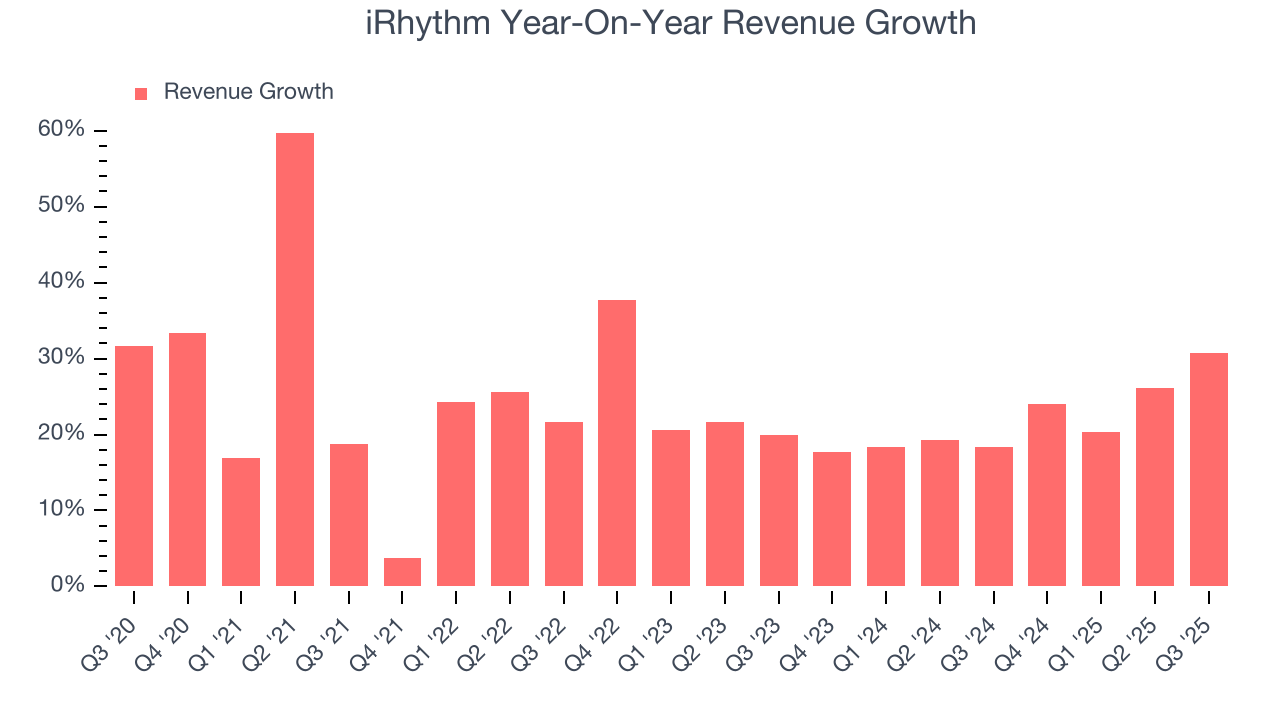
This quarter, iRhythm reported wonderful year-on-year revenue growth of 30.7%, and its $192.9 million of revenue exceeded Wall Street’s estimates by 4.6%.
Looking ahead, sell-side analysts expect revenue to grow 15.9% over the next 12 months, a deceleration versus the last two years. Still, this projection is admirable and implies the market is baking in success for its products and services.
7. Operating Margin
iRhythm’s high expenses have contributed to an average operating margin of negative 23% over the last five years. Unprofitable healthcare companies require extra attention because they could get caught swimming naked when the tide goes out. It’s hard to trust that the business can endure a full cycle.
On the plus side, iRhythm’s operating margin rose by 12.2 percentage points over the last five years, as its sales growth gave it operating leverage. The company’s two-year trajectory shows its performance was mostly driven by its recent improvements. These data points are very encouraging and show momentum is on its side.
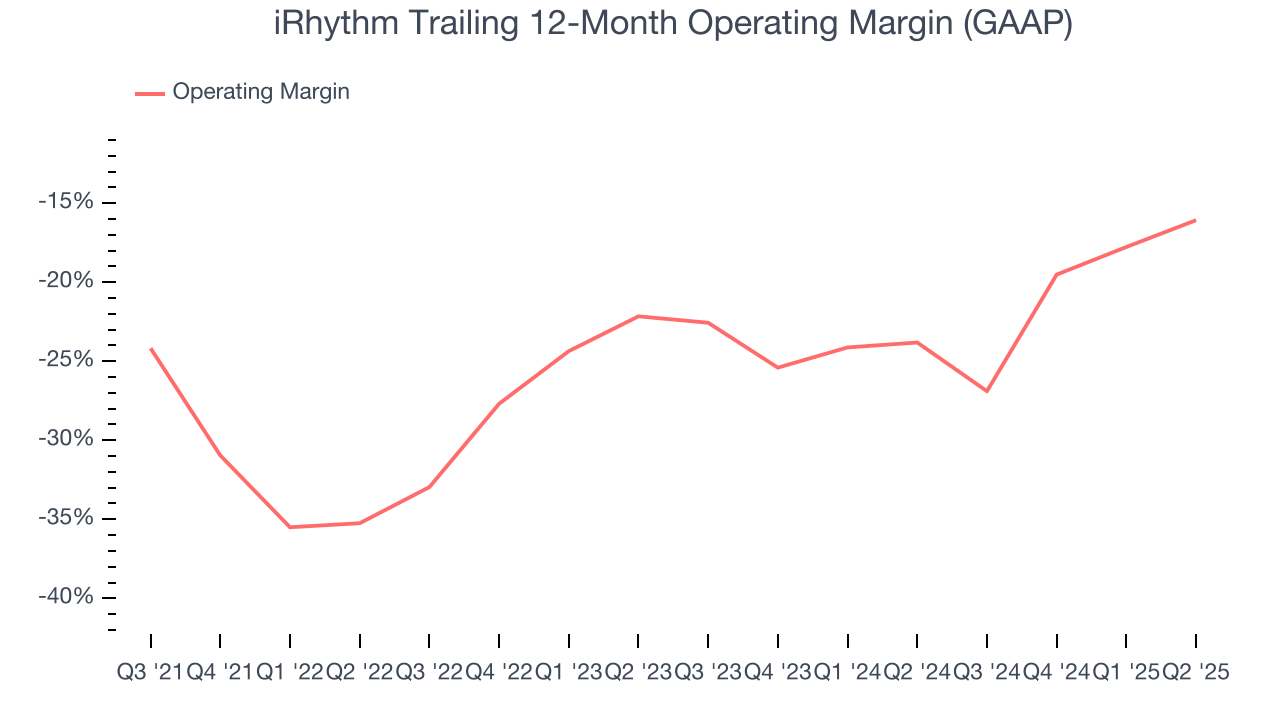
in line with the same quarter last year. This indicates the company’s overall cost structure has been relatively stable.
8. Earnings Per Share
Revenue trends explain a company’s historical growth, but the long-term change in earnings per share (EPS) points to the profitability of that growth – for example, a company could inflate its sales through excessive spending on advertising and promotions.
Although iRhythm’s full-year earnings are still negative, it reduced its losses and improved its EPS by 7% annually over the last five years. The next few quarters will be critical for assessing its long-term profitability. We hope to see an inflection point soon.
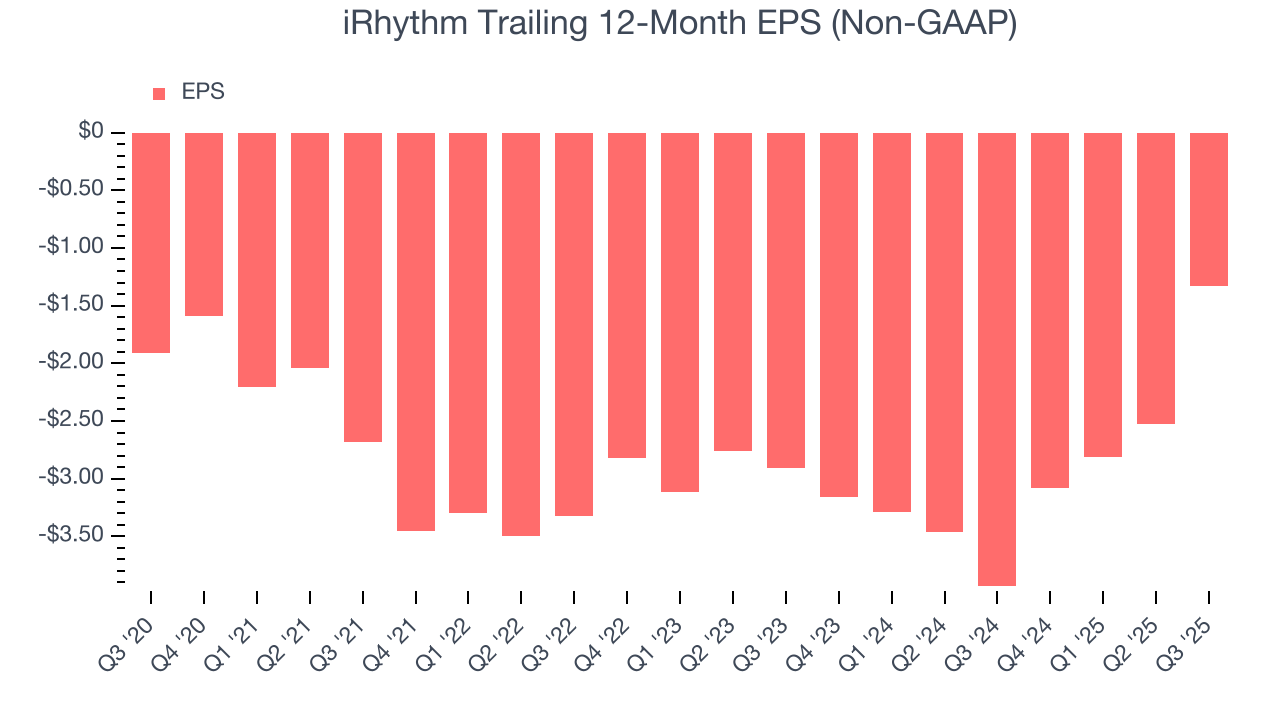
In Q3, iRhythm reported adjusted EPS of negative $0.06, up from negative $1.26 in the same quarter last year. This print easily cleared analysts’ estimates, and shareholders should be content with the results. Over the next 12 months, Wall Street expects iRhythm to improve its earnings losses. Analysts forecast its full-year EPS of negative $1.33 will advance to negative $0.69.
9. Cash Is King
If you’ve followed StockStory for a while, you know we emphasize free cash flow. Why, you ask? We believe that in the end, cash is king, and you can’t use accounting profits to pay the bills.
iRhythm’s demanding reinvestments have consumed many resources over the last five years, contributing to an average free cash flow margin of negative 10.4%. This means it lit $10.45 of cash on fire for every $100 in revenue.
Taking a step back, an encouraging sign is that iRhythm’s margin expanded by 22.5 percentage points during that time. In light of its glaring cash burn, however, this improvement is a bucket of hot water in a cold ocean.

10. Balance Sheet Assessment
iRhythm reported $565.2 million of cash and $733 million of debt on its balance sheet in the most recent quarter. As investors in high-quality companies, we primarily focus on two things: 1) that a company’s debt level isn’t too high and 2) that its interest payments are not excessively burdening the business.

With $53.89 million of EBITDA over the last 12 months, we view iRhythm’s 3.1× net-debt-to-EBITDA ratio as safe. We also see its $3.45 million of annual interest expenses as appropriate. The company’s profits give it plenty of breathing room, allowing it to continue investing in growth initiatives.
11. Key Takeaways from iRhythm’s Q3 Results
It was good to see iRhythm beat analysts’ EPS expectations this quarter. We were also glad its revenue outperformed Wall Street’s estimates. Zooming out, we think this was a good print with some key areas of upside. The stock traded up 5.5% to $194.50 immediately after reporting.
12. Is Now The Time To Buy iRhythm?
Updated: December 3, 2025 at 10:51 PM EST
We think that the latest earnings result is only one piece of the bigger puzzle. If you’re deciding whether to own iRhythm, you should also grasp the company’s longer-term business quality and valuation.
iRhythm possesses a number of positive attributes. To kick things off, its revenue growth was impressive over the last five years. And while its operating margins reveal poor profitability compared to other healthcare companies, its rising cash profitability gives it more optionality. On top of that, its expanding adjusted operating margin shows the business has become more efficient.
iRhythm’s EV-to-EBITDA ratio based on the next 12 months is 66.1x. Looking at the healthcare space right now, iRhythm trades at a compelling valuation. If you believe in the company and its growth potential, now is an opportune time to buy shares.
Wall Street analysts have a consensus one-year price target of $219.93 on the company (compared to the current share price of $183.15), implying they see 20.1% upside in buying iRhythm in the short term.




